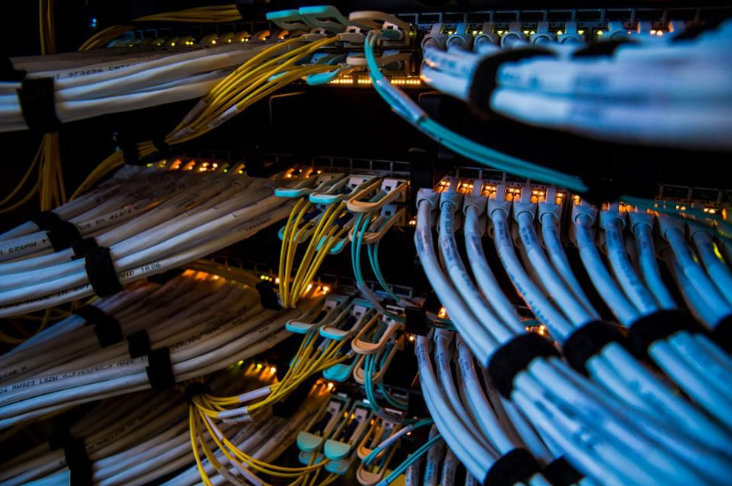I’ve been extremely lucky to have spent my entire adult life on the forefront of digital technology – and most of it was by complete accident (but, that will be a story for another day….)
My career has spanned IBM, the launch team of the Pentium at Intel, an early Amazonian (I led one of the teams that built the fulfillment operations), a senior executive at Cisco and finally eight years running the worldwide operations for Google – and a front seat for a LOT of innovation and what we now call Digital Transformation or Digitization. Along the way, I also created two “Big Data” teams – one at Amazon and one at Google.
While at Google, I spent countless hours with CIOs, senior executives and cloud customers from a myriad of global companies that all asked some variant of this same question: “We aspire to be just like Google when it comes to digitally transforming our business. How do we start and what are the first steps that we need to take?” Great question, but it’s not that simple or straightforward recipe because Google’s foundation and culture were built around digital transformation from day one and it’s an inseparable part of the very ethos of the company. Fortunately, there are some common steps that all companies need to go through to forge their digital strategy.
First, let’s get a basic understanding of digitization:
Digitization is the translation, representation, and presentation of every sound, image, video, document, transaction, and measurement into a machine-readable (digital) and actionable format.
What were the catalysts for Digitization? What brought about this digital revelation? Steve Case talked about three phases of the Internet: Internet 1.0 was the physical infrastructure – the wiring and plumbing of the Internet so to speak. This phase was great for companies like Cisco, Dell and HP (basically anyone that was selling physical infrastructure and networking).
Next came Internet 2.0 – distinct businesses that were built on the foundations of the Internet: Perfect examples are Facebook, Google, Amazon, Expedia – the Internet-enabled new business models.
The current phase that we live in is Internet 3.0 – the ubiquitous phase of the Internet – where the Internet is now enabling (and I would go so far as to say requiring) ALL companies to create new businesses and shareholder value by augmenting their current business models with digitization. Stated another way and more directly – if you’re not thinking about how to transform your business with digitization, you can bet that your competitor is doing just that – or some other start-up that licking their chops to eat your lunch (read – your current business model).
So, what brought this digital transformation about:
- Massive amounts of (cheap) compute cycles: Annually, the combined spend of Google, Amazon and Microsoft on cloud infrastructure approaches $30B. When you include other companies like Facebook, Oracle, and Salesforce (just to name a few), the immense amount of new compute power provided to the word just annually is mind-boggling. And for the most part free, with the exception of a few advertisements thrown your way. This does not even include the massive amount of compute power that resides in your hand or in your pocket (e.g. your cell phone or tablet).
- Massive amounts of (cheap) storage: Along with massive amounts of cheap compute power, staggering amounts of “almost-free” hard disk drive space is being deployed as well in these global server farms and data centers. And it’s likely storing every Youtube video, email, Instagram post, Facebook post (you get the picture) that you’ve made – all ready to be analyzed with this massive amount of compute power.
- The mass proliferation of the Internet-connected devices (The Internet of Things – IoT): In the past few years, we’ve seen a virtual exposition in IoT (the Internet of Things). Here’s my two cents on IoT: (1) If it can have a microprocessor embedded in it, it will. (2) If it has a microprocessor, it will be connected to the Internet and (3) if it’s connected to the Internet, it’s going to collect and stream (lots of) data. Net-net, just assume everything will be connected to the Internet!
- GPS, Localization and Hyper-localization – Apart from sounding a little Orwellian, your phone, tablet, and laptop geo-tags everything (including you) down to within a few meters of accuracy. With the explosion of IoT devices, we’re essentially wiring up the entire planet (and everything on it). My favorite examples are Amazon’s visibility into it’s supply chain (including your deliveries) and what Waze has enabled with traffic and route optimization by co-opting your mobile phone (your mobile phone is the IoT device for your car).
- Ubiquity of compute and connectivity: With the rise of omnipresent high-bandwidth mobile networks, intelligent edge devices. massive cloud networks, and emerging satellite data networks, data can be ingested from almost every corner of the planet – transforming the entire planet into a living organism of data.
- Machine Intelligence and Deep Learning: With all of this data being created in both structured (tagged) and unstructured format, Machine Intelligence and Deep Learning have come to the rescue. Machine intelligence enables meaningful data and in some cases knowledge, to be extracted from all of this data. Just Google “Pink Ferraris” and look at the images retrieved. A machine intelligence algorithm sorted all of those pink Ferraris – likely with zero human interaction. Consider all of the possibilities!
- Machine Autonomy: Machine-to-Machine interactions (Taking People out of the Loop): Let’s face it, for most of our businesses today, people are the weakest link in our business processes. Humans are lousy at repetitive tasks – even more so after a poor nights sleep or the day after the Super Bowl. We’re just starting to see the rise of bots and other machine-to-machine processes, but as more people are taken out the loop, our businesses have the capability to run nearly at the speed of light (a perfect example being high-speed, automated stock and currency trading).
What does all this mean? Like Yogi Berra said, “The future ain’t what it used to be!”
Disruption becomes ubiquitous and the norm; not the exception!
It almost goes without saying, but all around us today, business models are being radically transformed by digitization. Vast, new opportunities are being created, but other companies have been, are currently being or will be destroyed. The global effects of digitization are going to be a LOT bigger than the Internet 1.0 and 2.0!
Let’s look at a couple of examples:
- Digital Cameras: I remember being a grad student in business school in 1992 and listening to an impassioned argument from some Kodak executives as to why digital photography was never going to be accepted by professional photographers because the resolution of digital pixels was not fine enough. Coincidentally, most of these executives where chemists and not electrical engineers. My guess is that they had not heard about Moore’s Law. What’s even crazier is the fact that Kodak had patents for many aspects of digital photography at the time, but they just couldn’t see the future. Try and find a professional photographer today who uses film….it went the way of Kodak.
- Cars: The philosophical gulf between Silicon Valley and Detroit when it comes to notions of personal transportation is much larger than the 2500 miles in physical distance. As a self-professed “car guy,” I’m enamored by horsepower, engine displacement, quarter-mile times and top speeds, but on these points, I resemble my Detroit brethren much more than my Silicon Valley counterparts. Most of my Silicon Valley counterparts view a car as a means to get from point A to point B – and that’s about it. To them, a car is NOT a status symbol or an object to be coveted in one’s garage – or even a physical asset that they want to own – it’s all about the utility value. To them, a Tesla or a Waymo car is really just a computer on 4 wheels! And, I have to admit that I envy my co-workers that receive their Tesla updates over the air. Whether it’s ride-sharing apps like Uber or Lyft, self-driving cars, or ride-sharing scooters and bikes, or even personal flying craft, this is one area of the economy that’s going to transform the global auto industry…and I suspect faster than most of us can imagine.
- And tons of others: Banking, Video-streaming, Retail and Shopping, Travel, Gaming, Entertainment. Etc. There simply is not going to be a business model that has been transformed or that will be transformed by digitization.
Where do you start and what steps can you take?
- Accept the inevitable: It’s safe to assume that digitization will likely transform every aspect of your business and your business model. Don’t bury your head in the sand, rationalize or ignore it! To quote my former CEO, Andy Grove, “only the paranoid survive.” And if there is any time to take this sage advice, this is a good one! Balance fear and paranoia with exuberance for the new opportunities for your business.
- Look at the nexus of atoms and bits: Much of the impetus for digitization lies at the nexus of the physical world and the digital world. The lines between hardware and software are going to continue to merge and blur. Spend a LOT of time here – this is where much of the action lies.
- Examine your business model through the filter of digitization: Ask yourself how digitation presents opportunities and threats to your current business model. This is an area where you want to cast a broad net – get out of your comfort zone and ask yourself “how can/will digitization eat my business model for lunch?” Ask others – we’re usually too close to a problem to be rational or objective. Engage your millennial employees – and really listen to them. Remember, they are the first generation to know the digital age for their entire life and believe me, they view the world through a very different lens.
- Double down on your investment in analytics and software: It’s a literal war for talent out there and the Googles, Baidus, Facebooks and scores of companies that you’ve never even heard of are hiring every person with a hint of analytics and big-data on their CV. You’re likely late to this party – so run like heck to catch up!
- Think about your teams: Structure, Culture, Change Management, Skills and Composition: Arguably, this is really the toughest part of transformation – because inevitably, you’re asking people to get out of comfort zones and embrace change – and let’s face it, most of us are lousy at this part of the process. I’m not a consultant, but I’m willing to bet that most consultants will tell you that this is the place where most companies screw it up.
Source: Jim Miller https://www.forbes.com






